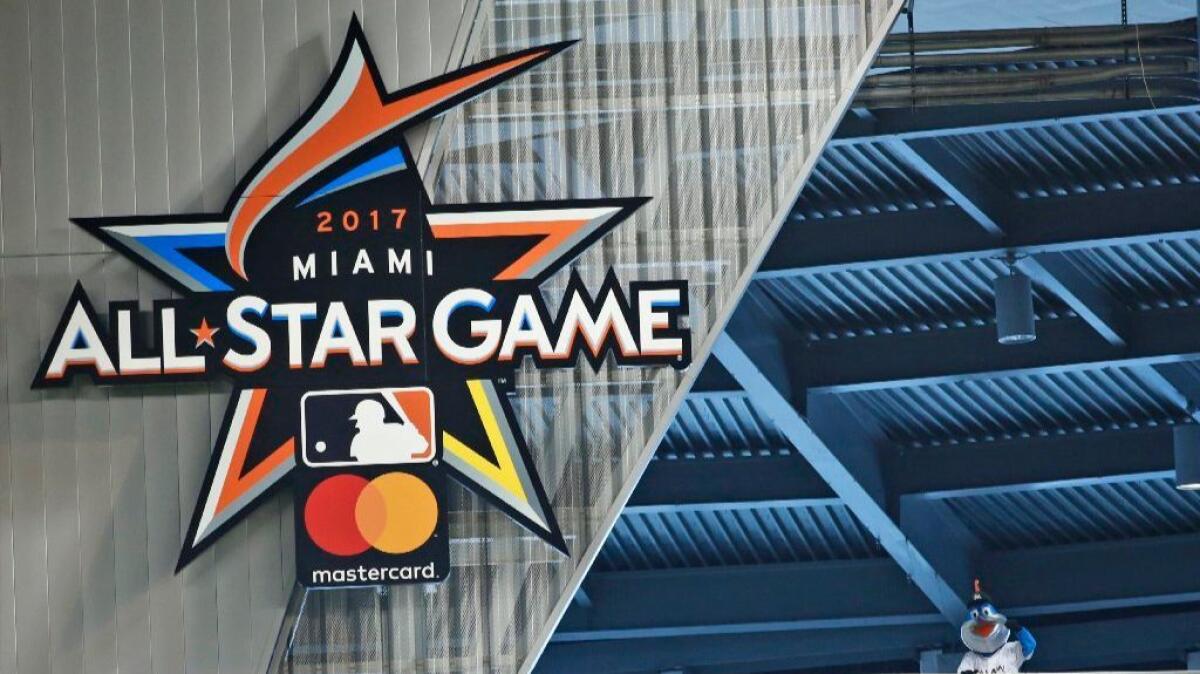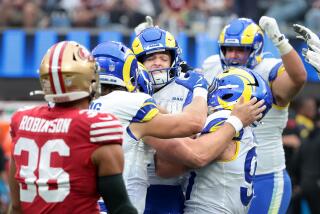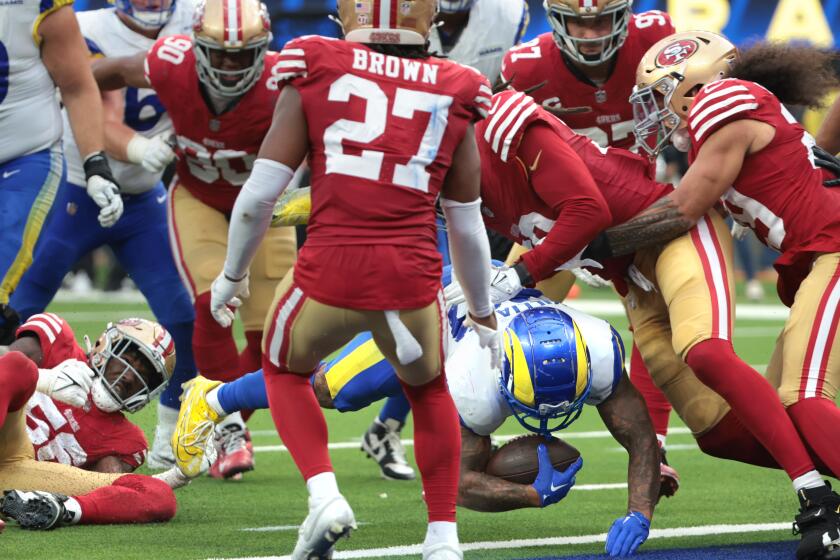MLB puts a price on winning the All-Star Game

Miami Marlins mascot Billy the Marlin waves after unveiling the official logo for the 2017 All-Star Game that will be held in Miami on July 27.
You can put a price on victory: $20,000.
That’s the bonus that each player on the winning All-Star team will earn starting next season, one of a host of details unveiled Friday when Major League Baseball and the Major League Baseball Players Assn. confirmed and announced a new collective bargaining agreement through the 2021 season.
The league will use cash — rather than the lure of home-field advantage in the World Series — to try to motivate players to give it their all for their league in an exhibition game. The average major league salary on Opening Day last season: $4.4 million, or about $24,000 per day for the 183-day season.
The league also announced that All-Star rosters would be made up of 32 players — 20 position players and 12 pitchers — with the commissioner’s office rather than the All-Star managers making the final few selections for each roster.
Among the other provisions announced Friday:
--The amount teams can spend on players without paying luxury taxes rises each year, from $195 million in 2017 to $210 million in 2021. The maximum penalty remains a 50% tax on the amount over the threshold, with the addition of a 12% surtax on amounts $20 million to $40 million over the threshold and up to a 45% surtax on amounts beyond $40 million over the threshold. The Dodgers are expected to pay about $30.5 million on a $250-million payroll for 2016; they would pay $36.65 million on the same payroll next season.
--Players given qualifying offers have 10 days to accept or reject them, not seven days. No player can be given a qualifying offer more than once. Teams no longer give up a first-round draft choice to sign a free agent that had received a qualifying offer. What teams give up — and what the old team gets in return — is weighted in favor of small-revenue teams and teams that do not exceed the luxury tax.
--Teams will be limited to from $4.75 million to $5.75 million per year on total bonuses for international amateurs, again weighted in favor of small-revenue teams, though those pools “will grow with industry revenue.” Teams wanting to spend more can trade for unused money from another team’s pool.
--The number of random drug tests will increase from 3,200 to 4,800 during the season and from 350 to 1,550 during the winter, the latter ensuring that each player will be subject to at least one random off-season test. Drug-testing experts have said the relatively few winter tests could allow players to use banned substances in the off-season. The number of random blood tests will increase from 260 to 500 during the season and from 140 to 400 during the winter. Although penalties for steroid violators were not changed, players testing positive for stimulants will be suspended 50 games for a second offense, 100 games for a third offense and banned for life for a fourth offense.
--Smokeless tobacco is banned for all players making their major league debut in 2017 or later.
--Baseball will adopt an anti-bullying and anti-hazing policy.
--Each club must retain a “bilingual media relations professional” and enhance opportunities for Spanish-speaking players to learn English.
--No longer can a player be optioned to a minor league club for a day or two in September, as the Dodgers did last season with Kenta Maeda, then recalled because the minor league club’s season has ended. In that circumstance, an optioned player cannot be recalled for 10 days.
--Baseball will stage “games or tours” in Mexico, Asia, Puerto Rico, the Dominican Republic and London over the next five years.
--The minimum salary for a major leaguer rises from $507,500 in 2016 to $535,000 in 2017; $545,000 in 2018; and $555,000 in 2019; with cost-of-living increases thereafter. The minimum salary for a minor leaguer on a 40-man roster rises from $82,700 in 2016 to $86,500 in 2017; $88,000 in 2018; and $89,500 in 2019; with cost-of-living increases thereafter.
--More day games on the last day of a series.
The complete details can be found here.
Follow Bill Shaikin on Twitter @BillShaikin
More to Read
Go beyond the scoreboard
Get the latest on L.A.'s teams in the daily Sports Report newsletter.
You may occasionally receive promotional content from the Los Angeles Times.











